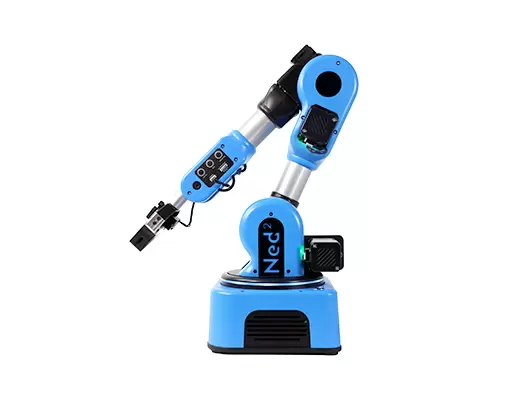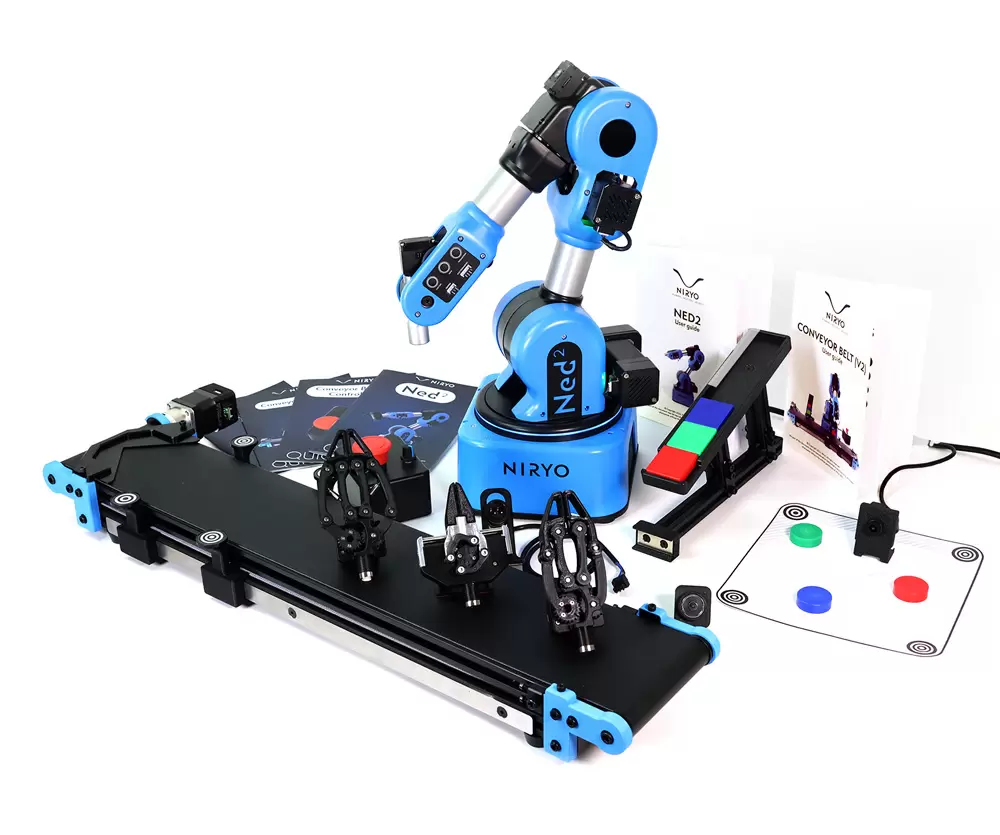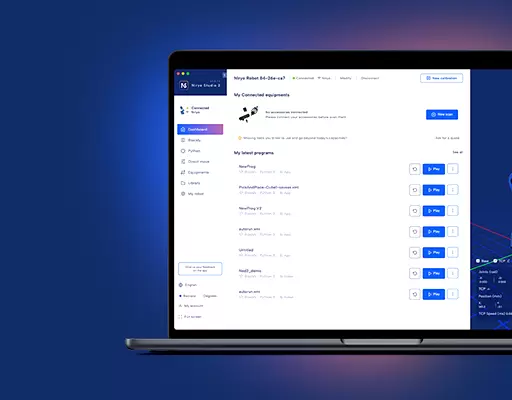Applications

Need to talk with us?
The Ned2 has been designed to take the learning experience to the next level.
This advanced educational robot provides an all-in-one solution for all STEAM classrooms,
offering AI and programming projects to students of all ages and levels.
Learn Programming.
Ned2 supports both Blockly and Python programming languages.
Whether you’re a programming beginner or on your way to becoming an expert, this will allow you to take your programming skills to the next level.
Explore Robotics.
The Ned 2 is the robot that democratizes robotics.
Making it accessible to everyone, even from an early age. Our six-axis robot allows to deepen your skills at various study levels, starting from learning programming and electronics to advanced programming of robotic functions with ROS.
IA Vision Training
Niryo integrates vision tools with its Ned2.
We have developed our own vision kit that enables us to detect shapes and colors, as well as address and study topics such as image recognition, machine learning and Artificial Intelligence.
Discover Industry 4.0
Industry 4.0 is the future of industry. Niryo is at the heart of this challenge, and has developed a complete ecosystem to help you discover this industry and its foundations.
Whether for research, production line prototyping or education, our ecosystem is modular and perfectly connected to our robots, making it easy for you to use.
Solutions designed for BTS CIEL
With Ned2, Niryo helps your BTS CIEL students to develop their programming skills. Discover our easy-to-use solution.
Whatever the level of your BTS CIEL students, our solution will take their programming to the next level. Numerous exercises and practical work available
Using AI to reproduce sign language with a robotic arm
We visited Esirem’s Condorcet university center in Le Creusot (France), where robotics and programming courses are taught.
Through this exchange, we were able to see how one of their projects works: they use our 6-axis robotic arm to reproduce movements by AI in space using sign recognition and interpretation. Many other projects and exercises are also carried out.
Reproduction of robot movements by AI
We visited the Polytech engineering school in Villeneuve d’Ascq, near Lille (France).
This engineering school of over 250 students is one of the 15 schools in France’s leading network. This campus offers 9 different engineering specialties, both as students and apprentices, with competitive entrance exams after the baccalaureate or at Bac +2 and 3 levels. This school only offers Master’s-level degrees
Give the robot instructions and link it with AI algorithms
We visited the ISEN engineering school in Nantes (France). This campus is part of a group of 5 Yncréa campuses spread across France in Brest, Caen, Rennes and Paris.
This engineering school offers a range of courses in 15 different professional fields, taught in 5 post-baccalaureate cycles: generalist, IT, mechanics, ergonomics and environment, with over 98% professional integration at the end of the course.
Playing with robotics arms and developing students creativity with Ned2
We visited the IUT Béziers (University of Montpellier) in France. Using a case study, they explained how easy it was for their students to get to grips with the Ned2 robots.
We paid a special visit to the Robotics and Artificial Intelligence in Industrial Environments (Rob&IA) degree program, which uses Ned2 robotic arms.
Pick up objects from a conveyor using a robotic arm and stack them
We visited ELISA Aerospace an engineering school based near Bordeaux (France). We had the opportunity to see how this school uses Ned2, our 6-axis robotic arm.
Find out how students carried out pick and place exercises and many other projects: Kapla simulations, order picking processes, test tube handling.
Introduction to a production line
We visited the vocational school Léon Chiris in Grasse, France. We were able to see how this school uses our 6-axis robotic arms.
We spent some time with the school’s electrical sections, who used our robot to learn about the industrial side of things, and to teach programming.
Simulate a robotic palletizing
We visited the ISEL Normandie Le Havre university. We were able to see how the Ned2 robotic arms are used by students on the Logistics Process Automation course.
Find out how these students quickly and efficiently created a replica of a palletizing machine using 6-axis robotic arms.

Need to talk with us?



